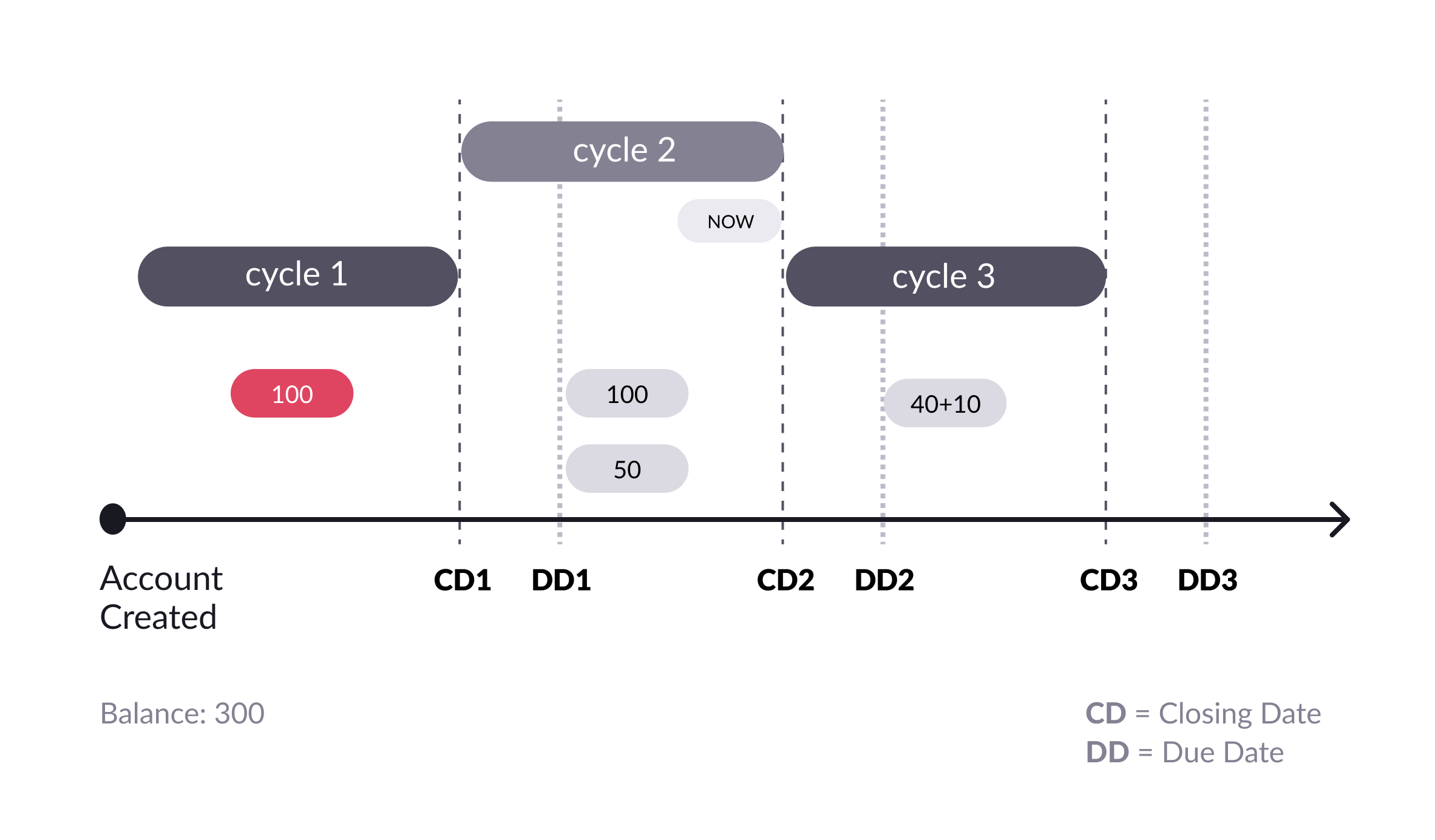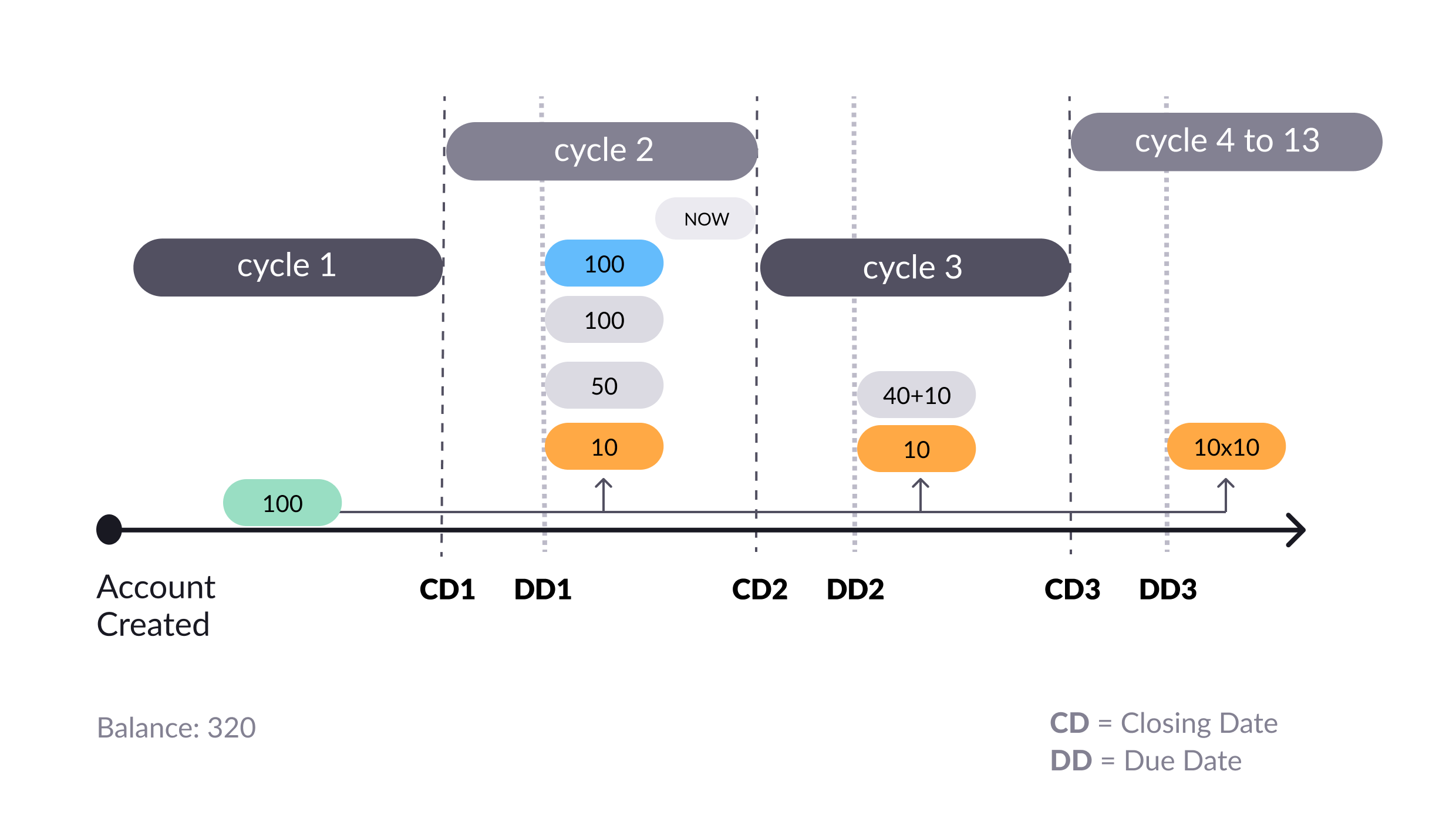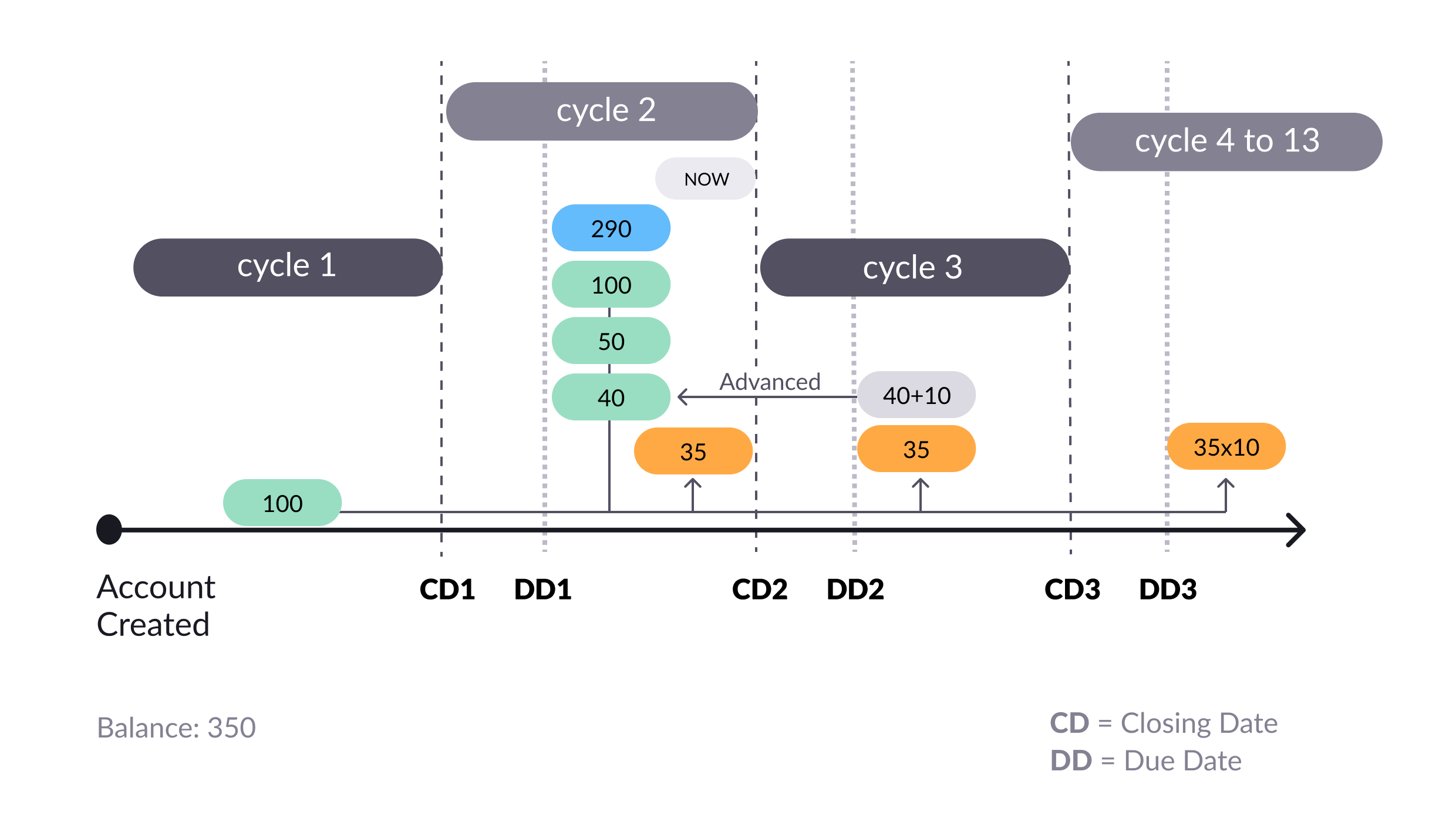Credit card refinancing
While payments are organized in cycles, some cardholders might miss due dates and build up a debt that becomes hard to pay off in a single cycle. On the other hand, some account holders might have extra income that allows them to pay off their future debt, alleviating the impact of interest on their finances.
The statements displayed in the figure below can serve as a base scenario for examples of how you can renegotiate credit card debt on the Pismo platform. To keep things simple, the examples ignore interest accrual on overdue payments.

Three billing cycles, where one has an overdue amount (shown in red). Assume all values are in US dollars.
Cycle 1 shows a statement with an overdue transaction amount of $100. Cycle 2 shows two transactions in the current statement for $100 and $50. Cycle 3 shows one transaction of $40 in a future statement, plus $10 interest. The card has a total balance of $300.
The installment advancement, installment agreement, and statement agreement contracts allow you to give customers options to manage their cash flow and negotiate payment conditions.
Installment advancement
An installment advancement is a way to settle future debt on the current cycle, rather than on a future cycle. Essentially, it’s a cash flow management feature.
When there's interest applied to a transaction brought from a future statement to a current one, the platform removes all interest and updates the transaction amount. See figure below.

Settling a debt in full in the current billing cycle (shown in blue).
In Cycle 2, the cardholder advanced the future transaction into the present. By doing this, they excluded the transaction’s interest charges of 10. So now, they can pay their debt in full with a payment of 290. If no installment advancement had been done, the amount paid to settle all debt would have been 300.
Installment agreement
If the cardholder wishes to renegotiate only overdue debt, use an installment agreement contract.
After implementing an installment agreement, the debt due on an account redistributes across the next statements. The platform then adds a credit equal to the refinanced balance and overdue balance from other past statements. It creates installments for current and future statements. See the figure below.

Redistributing the debt across the billing cycles (shown in orange).
After implementing the installment agreement of the 100 that was overdue in Cycle 1, the cardholder needs to make a payment of 160 in Cycle 2 to avoid becoming overdue in DD2. The cardholder also has to make a payment of 60 in DD3 in Cycle 3. To avoid becoming overdue again, the cardholder has to pay 10 in the 10 subsequent due dates.
Statement agreement
If the cardholder wishes to renegotiate all debt– past, present, and future, use a statement agreement contract.
If you don’t advance all future debt to the current statement before implementing the statement agreement, the compensation between the statement agreement credit and the future debt will only happen in the future closing dates.
The platform then:
- Adds a credit to the total balance for current statements after advancing all future debt.
- Creates installments for current and future statements
See the figure below.

Advancing future debt to the current cycle and creating installments (shown in gray and orange).
After implementing the statement agreement in Cycle 2, the total balance is 290 for 12 installments. To avoid becoming overdue again, the cardholder has to make a payment of 35 for the next 12 due dates.
A note for Brazilian developers
According to a Brazilian Central Bank resolution, any debt renegotiation occurring after 1 January, 2024 may not have a sum of interest and fines higher than the original debt amount. This includes revolving interest charges and payment agreement interest.
Updated over 1 year ago